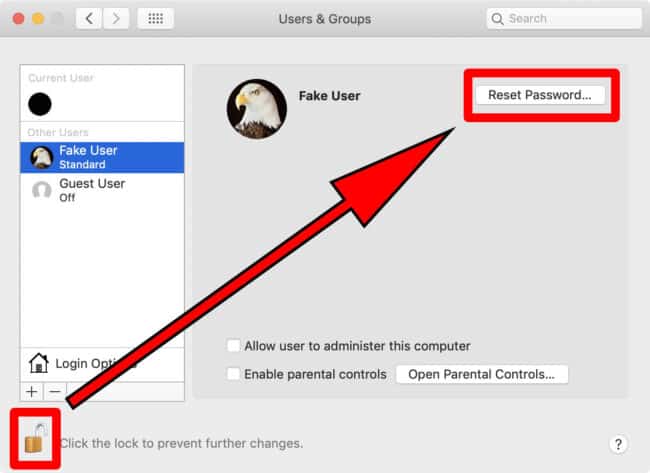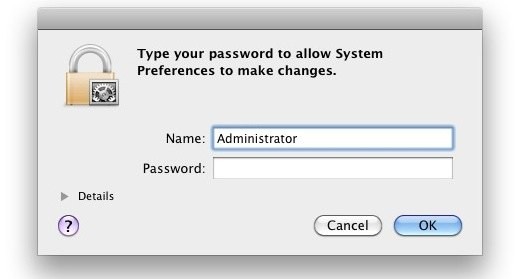Its always better to keep an spare admin user account to log into your computer or PC, right? Its purpose is to provide you with an admin user account that is immaculate and is very helpful when you’re having trouble .For example, here let’s talk about Mac- when you try to log into your Mac and it repeatedly freezes up, and you’ve already tried reseting functions.Or, even worse when you can’t log in at all instead, you see a pop-up message that says “unable to log in to the user account at this time”.Unfortunately, even though creating a spare admin account is easy, many of us prolong until it’s too late.

Actually, it’s never too late. If for some reason you find yourself locked out of your Mac, either because you forget your account password or some other reason, it is possible to create a brand new admin account with a new user ID and .Once you have administrative access to your Mac, you can reset your old forgotten password and then log out and log back in with your regular account.
This method is advantageous when it comes to ease, but also has a few drawbacks:
• It won’t work if you have encrypted your Mac’s drive using FileVault,
• It won’t work if you have set up a firmware password that you have forgotten.
So now let’s see how to create a new admin account by performing few steps as mentioned below:
Creating an Admin Account in Single User Mode
Start by turning off your Mac. If you’re not able to shut down normally, press and hold the power switch.
Once your Mac shuts down, you’re going to restart it in a special startup environment called Single User mode, which boots your Mac into a Terminal-like interface where you can run commands directly from a prompt.
1. To boot to Single User mode, start your Mac holding down the command + S keys.
2.Your Mac will display scrolling lines of text as it boots up. Once the scrolling stops, you’ll see a command prompt in the form of a ” :/ root# ” . The ” :/ root# ” is the command line prompt.
3.At this point, your Mac is running, but the startup drive hasn’t mounted. You need to mount the startup drive, so you can access the files that are located on it. To do this, at the prompt, type or copy/paste the following text:
/sbin/mount -uw /
Press enter or return on your keyboard.Your startup drive is now mounted; you can access its files and folders from the command prompt.
4.We’re going to force OS X to think that when you restart your Mac, it’s the very first time you’ve booted into the currently installed version of OS X. This will make your Mac behave the way it did the first time you turned it on, when it guided you through the process of creating an administrator user account.This process will not remove or alter any of your existing system or user data; it will just allow you to create one new admin user account.
5.To restart your Mac in this special mode, we need to remove one file that tells the OS whether the one-time setup process has already been performed. Type or copy/paste the following text at the prompt:
rm /var/db/.applesetupdone
Press enter or return.
6.With the apple set-up-done file removed, the next time you restart your Mac, you will be guided through the process of creating the necessary admin account. Reboot.
7.Press enter or return.
8.Your Mac will restart and display the Welcome to Mac screen. Follow the step-by-step guide to create your new admin user account. Once you finish creating the account, your Mac will log you in with the new account.
So even if you can’t Access to any of your User Accounts you can still create a New Admin Account!!

How to Reset a Mac’s Admin Account’s Password?
Here we have 3 different ways for you.
Have you ever forgotten your Mac’s administrator account password? If you can’t remember your administrator password, you may have difficulty logging in to your account or performing various tasks that require an administrator password. The Apple setup utility ran you through the process of creating the account and then sent you off to use your Mac.

You can reset a user account password, including any administrator account, using one of the following methods:
• Use an Existing Administrator Account to Reset Another Administrator Account
Resetting an administrator account isn’t difficult, as long as you have a second administrator account to use.Of course, this assumes that you haven’t also forgotten the password for the other administrator account.
1. If you do know the password for the second administrator account, log in to that account.
2. Launch System Preferences, and select the User and Groups preference pane.
3. Click the lock icon in the bottom left corner of the preference pane, and then supply your administrator password.
4. In the left-hand pane, select the administrator account whose password needs to be reset.
5. Click the Reset Password button in the right-hand pane.
6. In the sheet that drops down, enter a new password for the account.
7. Click the Reset Password button on the drop-down sheet.
8. Resetting the password this way creates a new keychain file for the user account. If you wish to use the old keychain file, see the instructions below.
• Using Your Apple ID to Reset an Administrator Account
Next is the ability to use your Apple ID to reset your administrator account on your Mac. Actually, you can use this feature to reset the password for any user account type, including a standard account, managed account, or sharing account.
1. In order to use your Apple ID to reset an account’s password, the Apple ID must be associated with that account. You would have associated your Apple ID with your user account either when you originally set up your Mac or when you added user accounts.
2. After entering your password incorrectly three times at the login screen, a message will display your password hint, as well as the option to reset your password using your Apple ID. Click the small right-facing button next to the “…reset it using your Apple ID” text.
3. Enter your Apple ID and password, and then click the Reset Password button.
4. A warning message will display, telling you that resetting the password will cause a new keychain file to be created. Your keychain holds frequently used passwords; creating a new keychain usually means you’ll have to resupply passwords for some services you use, including email accounts and some websites you’ve set up for automatic log-in. Click the OK button to reset the password.
5. Enter the new password, along with a password hint, and then click the Reset Password button.
6. You will be logged in and the Desktop will appear.
• Avoiding the Keychain Login Issue
One thing you can do is use a secure third-party password service as a place to store your login information for various services. This isn’t a replacement for Mac’s keychain, but a secure storehouse for you to keep the information safe, one which you can access using a different, and hopefully not forgotten, password.
One of my favorites for this job is 1 Password, but there are many others to choose from including LastPass, Dashlane, and mSecure. If you would like to find more password management options, open the Mac App Store, and search for the phrase “password.


COMMENTS